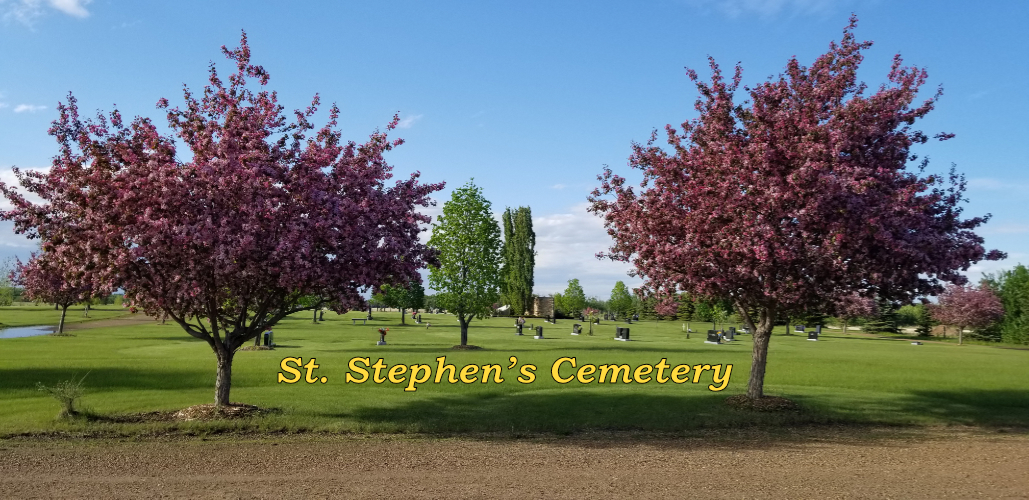What are the principal types of cemeteries, and how do they differ?
Cemeteries usually are divided into two broad categories: traditional cemeteries and memorial parks or gardens. A traditional cemetery, the type used for many generations, has upright monuments, usually made of stone. Many traditional cemeteries also have private mausoleums for above-ground interment. Because many have functioned in their communities for over 100 years, traditional cemeteries typically contain a great deal of history, such as architecture, statuary and other art, as well as the personages interred there. They often feature lush landscaping and impressive greenery. St. Stephen’s Cemetery, although relatively new, is a Traditional Cemetery that offers a broad range of burial and cremation options.
Memorial parks and gardens are a newer type of cemetery introduced about 85 years ago. They are cemeteries without tombstones: parks and gardens where bronze memorials are placed level with the ground to blend with the beauty of the landscape. They often feature expansive lawns with a variety of trees, flowering beds and gardens, as well as fountains, sculpture or memorial architecture.
Some cemeteries have both traditional upright monument sections and garden sections. Both types of cemeteries may offer above-ground interment in community mausoleums. Both traditional cemeteries and memorial parks may be operated on a for-profit or not-for-profit basis. Cemeteries in Alberta are primarily owned by municipalities, religious or fraternal organizations, or by commercial companies.
Why is having a place to visit so important?
To remember, and be remembered, are natural human needs. A permanent memorial in a cemetery provides a focal point for remembrance and memorializing the deceased. Throughout human history, memorialization of the dead has been a key component of almost every culture. The pyramids of Egypt, the catacombs of ancient Rome and the Tomb of the Unknown Soldier in Ottawa are examples of memorialization which demonstrates that, throughout our history, we have always honored our dead. Psychologists say that remembrance practices, from the funeral or memorial service to permanent memorialization, serve an important emotional function for survivors by helping to bring closure and allowing the healing process to begin. Providing a permanent resting place for the deceased is a dignified treatment for a loved one’s mortal remains, which fulfills the natural human desire for memorialization.
What is opening and closing and why is it so expensive?
Opening and closing fees can include up to and beyond 50 or more separate services provided by the cemetery. Typically, the opening and closing fee includes administration and permanent record keeping (determining ownership, obtaining permission and the completion of other documentation which may be required, entering the interment particulars in the interment register, maintaining all legal files); opening and closing the grave (locating the grave and laying out the boundaries, excavating and filling the interment space); installation and removal of the lowering device; placement and removal of artificial grass dressing and coco-matting at the grave site, leveling, tamping, re-grading and sodding the grave site and leveling and re-sodding the grave if the earth settles.
Can we dig our own grave to avoid the charge for opening and closing?
The actual opening of the grave and closing of the grave is just one component of the opening and closing fee. Because of safety issues which arise around the use of machinery on cemetery property and the protection of property of adjacent interment rights holders, the actual opening and closing of the grave is conducted by cemetery grounds personnel.
What happens when a cemetery runs out of land?
When a cemetery runs out of land, it will continue to operate and serve the community. Since more and more individuals and families are purchasing their graves in advance, graves which have been sold will be opened when a death occurs, markers will be placed and other services will be provided. Alberta law requires funds to be set aside from each interment rights sale and each memorial installation for the long-term care and maintenance of the cemetery. The amount to be set will vary depending on the type of space selected or the form and size of memorial installed.
How much do graves cost, and why aren’t they priced the same all over?
Grave prices can really vary. Grave prices are normally set based on their location. Normally, graves in urban centers are more expensive than in rural centers because of the replacement value of land. In addition, within the cemetery, grave prices can vary by the section in which the grave is located. For example, graves in a “feature” section — where there is a central feature such as a sculpture for the benefit of lot owners in that section — may be more expensive than in non-feature sections. The number of interments permitted in a grave may also affect the price, as may the size of the grave. Graves which allow for an upright monument may be more expensive due to the space required for the monument.
Will a cemetery ever be used for something else? Can the bodies be moved and buildings built?
Communities afford respect to cemeteries and to the memorialization which cemeteries provide. In order to protect interment rights holders, strict rules govern the use of cemetery lands. Graves are normally considered to be sold in perpetuity which restricts possible re-development.
In a hundred years will this cemetery still be here?
We think of cemetery lands as being in perpetuity. There are cemeteries throughout the world that have been in existence for hundreds of years.
